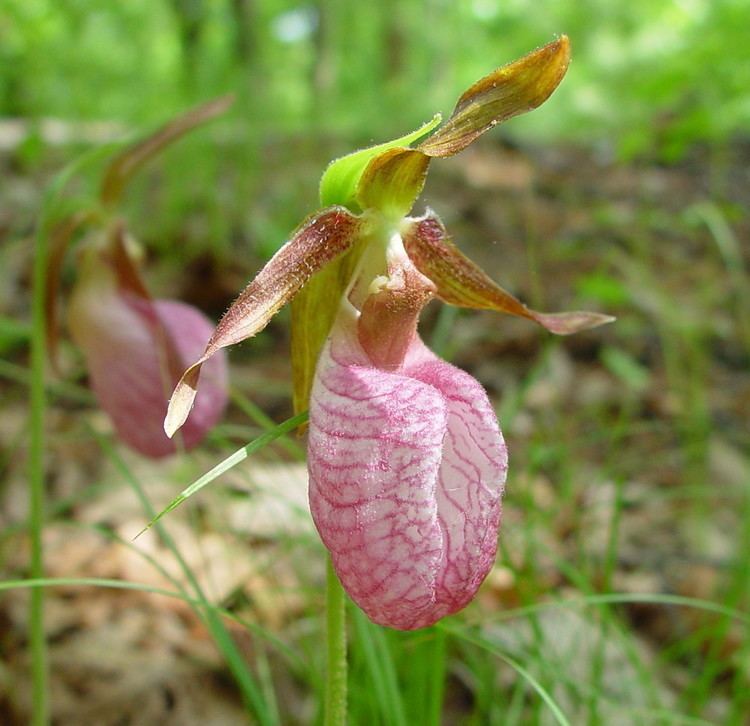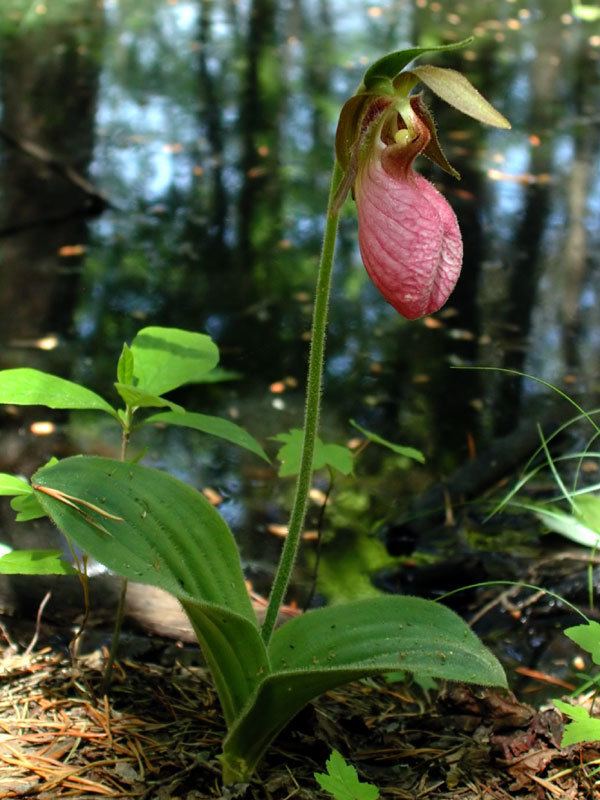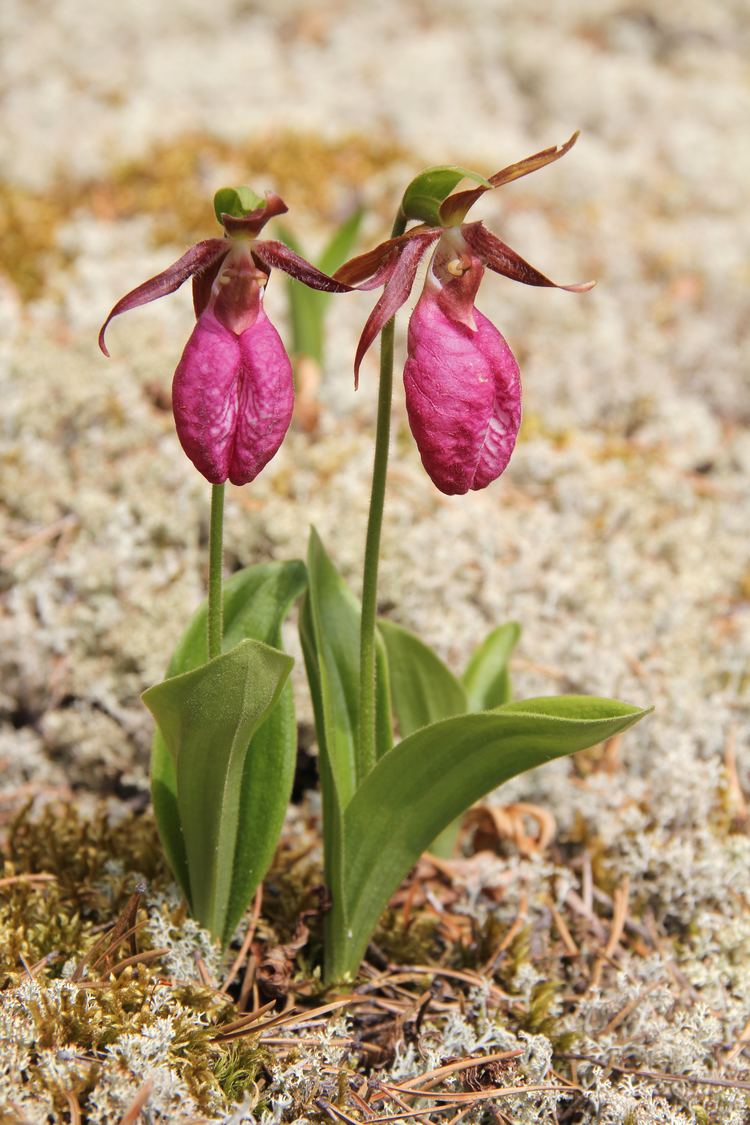Scientific name Cypripedium acaule | ||
 | ||
Similar Cypripedium, Orchids, Cypripedium reginae, Cypripedium parviflorum, lady's slipper orchids | ||
Plant portrait pink lady s slipper cypripedium acaule
Cypripedium acaule is a member of the orchid genus Cypripedium. Members of this genus are commonly referred to as lady's slipper orchids. First described in 1789 by Scottish botanist William Aiton, C. acaule is commonly referred to as the pink lady's slipper, stemless lady's-slipper, or moccasin flower. The pink lady's slipper is the provincial flower of Prince Edward Island, Canada. The pink lady's slipper is also the state wild flower of New Hampshire, United States.
Contents
- Plant portrait pink lady s slipper cypripedium acaule
- Mynature apps identifying pink lady s slipper cypripedium acaule
- Description
- Cultivation
- Range
- Habitat
- Frequency
- References

Mynature apps identifying pink lady s slipper cypripedium acaule
Description

Unlike most other species of Cypripedium, the pouch of C. acaule opens in a slit that runs down the front of the labellum rather than a round opening. The plant consists of two plicate leaves near the ground. From between those leaves sprouts a long, pubescent stalk that bears a single pink flower. The sepals and petals tend to be yellowish-brown to maroon with a large pouch that is usually some shade of pink but can be nearly magenta. The white pouched-green petaled forma alba can occasionally be found mixed in with normal populations.
Cultivation
Seed germination labs have increased the commercial availability of C. acaule, although it still tends to be less commonly available than other Cyp species and hybrids. This is primarily due to the extra care that must be provided if the growing site is not naturally suitable for in-ground cultivation. This plant grows in soils below a pH of 5, often at 4-4.5. At this high acidity soil fungus is suppressed, and acaule can thrive. There is even evidence that it is partially myco-heterotrophic by parasitizing fungus that attempts to invade its roots. However, above pH 5 the soil microbes become more than acaule can manage and the plants rot. Seedlings germinated in a sterile environment can grow and thrive in a much higher pH than 5, but must be grown below 5 if removed from the sterility.

For artificial cultivation container culture is a must, and the growing medium must be naturally acidic. Additionally, all other soil additives must be devoid of any calcium that could buffer the pH to above 5. High quality peat moss or pine duff work well, and pH neutral perlite can be added to improve porosity. Due to the risk of calcium bicarbonate, tap water is unsuitable. Rainwater or distilled water mixed with 2 ounces (57 g) of vinegar per gallon will assure that a reliably high acidity is maintained in the growing medium. Give bright dappled shade or morning sun. Sink pots in winter or store in a cold frame for insulation. Given these conditions acaule can thrive indefinitely, but will always require much more maintenance than other species/hybrids that can be grown in a wider pH range.
Range

Cypripedium acaule can be found in the eastern third of the United States, particularly in the Great Lakes Region and the Northeast, south along the Appalachians to Alabama. It also widespread in Canada, found in every province except British Columbia. It also occurs in the Northwest Territories and in St. Pierre & Miquelon. This widespread species can be found in a wide variety of environments, from coastal plains, to pine barrens, to mountaintops.
Habitat

C. acaule requires highly acidic soil but tolerates a range of shade and moisture, though it prefers at least partial shade and well-drained slopes. It is usually found in pine forests, where it can be seen in large colonies, but it also grows in deciduous woods. It was long speculated that a fungus association was needed for growth, and that acaule could not be artificially cultivated outside of these associations. However, a greater understanding of orchids in general has shown that this association is only needed to germinate orchid seeds, and is not required once plants begin making true leaves.
Frequency
This species is common in parts of the northern United States and adjoining provinces of Canada, but it is considered endangered in Illinois and Tennessee, Vulnerable in New York, and Unusual in Georgia.
